On December 3rd, 2007, in time for Miami’s art week extravaganza, where Art Basel Miami Beach and its 23 parallel art fairs greet the international art crowd, the Warehouse in Wynwood will unveil Sculpture: Selections from the collection of Martin Z. Margulies.
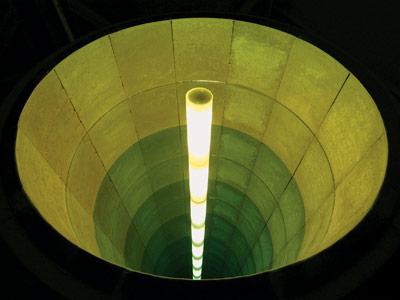
The forthcoming exhibition brings together 75,000 tons of monumental sculptures by major artists of the 20th century, most of which have been in the Margulies collection and resided exposed to the elements at Florida International University and at Grove Isle since the early 1980’s. In an extraordinarily beautiful composition they have now been juxtaposed in the Warehouse with recently acquired installations by emerging artists.
As Katherine Hinds, longtime curator of the Margulies collection states, “The time to expose them to a new audience was right; the time to bring these sculptures inside and experience them in a different way was now”.
My early memories in Miami capture my father’s condominium in Grove Isle – an exclusive, exotic island off the mainland of Coconut Grove. I was fascinated by the isolated splendor of the palm trees, the 360 degree surround of water and by the sculptures that resided all throughout the island. Little did I know at the time that twenty years later these same works of art, which served as my “playground”, would be a legacy to the artistic principles laid out by the most notable sculptors of the twentieth century.
Vivid images of the Alexander Calder mobiles dancing in the wind, Magdalena Abakanowicz’s installation of headless busts, Willem de Kooning’s seated woman, Di Suvero’s monumental steel structure with an oil drum as swing, Michael Heizer’s earthwork on aluminum, Donald Judd’s tunnel of steel rectangles, Sol LeWitt’s gigantic perfectly white grid cube, Miro’s dazzling bird, the unmistakable George Segal figures and the countless delicate Isamu Noguchi sculptural compositions, marked my first experience and revelation of living with art.
Most significantly, I remember one particular sculpture which served as a marking point for my daily jogging routine. I would spin Tony Rosenthal’s “Marty’s Cube”, which was mounted on a rotating axis, each time I completed a full circle around the island. At the time, more than fifty-five works of art dominated the gardens and plazas of Grove Isle. The complex of condominiums, hotel and clubhouse developed by Margulies was opened to the public in 1980. A walk through the grounds was a unique and unparalleled encounter of sculpture in a natural setting making Margulies a pioneer in Miami on the concept of incorporating art into the everyday living experience – enhancing a way of life.
Using Margulies’ own words, “The experience is question oriented not answer oriented. You are always searching, but you are really looking for more questions – there is no finality to it – it’s completely optimistic”. Margulies, a collector by passion, is known to have a keen eye and to respond to the emotional reaction and the sense of discovery he experiences as a work of art catches his attention. As noted by Paula Harper in the introduction to Contemporary Sculpture from the Martin Z. Margulies Collection, “For Margulies, the experience of collecting art changed his life from one more focused on business to one more spiritually charged”.
A developer and builder, Margulies, is obsessed with the sculptural elements of mass, volume and space whether in relation to art or to architecture. He is not intimidated by the grand scale of the pieces in his collection; on the contrary, he is seduced by it. In 1994, after nearly fifteen years at Grove Isle, the Margulies Sculpture Park, was moved on long-term loan to the lawns, ponds and plazas of Florida International University’s landscape grounds, bringing FIU into the ranks of the nation’s most prestigious university outdoor sculpture collections (UCSD, Stanford, and the University of Pennsylvania are others).
{mospagebreak}
There, thousands of students delighted in the new invigorating surroundings while fulfilling Margulies’ mission and emphasis on education through visual encounter. After nearly a decade, some of the sculptures have been gifted to several academic institutions including the University of Miami; while others, have been brought to their new home at the Warehouse, which opened in 1999 to house Margulies’ ever-growing photography collection.
This homecoming comes at the right time as today’s frantic contemporary art market, where everything and anything seems to be “it”, calls for a deeper encounter and dialogue on art. We are now at the right moment to re-evaluate the basic principles and foundations of contemporary art as laid out by these seminal sculptures.
Historically, these works were conceived by artists who shared in the ground-breaking constructivist ideals of the 60’s and 70’s, where sculpture highlighted structural techniques and industrial materials. At the same time, there was a general feeling of optimism shared by these artists. America was feeling strong amidst the cold war effects and these artists believed that their work made a difference.
Interestingly, the new works in the collection arise from the natural progression of sculptural concepts. Installation art does not focus on form but uses various media and sculptural elements to alter the way we experience a complete space.
In contrast to the principles of land art as seen in Michael Heizer’s monumental volcanic piece, “Elevated, Surface, Depressed”, 1981, which focuses on the “real”, Korean/American artist Chul-Hyun Ahn, explores the “illusion”. In Margulies’ recent acquisition, “The Well”, 2005, Ahn traps light in the space between two mirrors within a circular concrete form, creating an infinite and breathtaking bottomless well.
Another young artist, Peter Belyi, clearly brings to question the utopian ideology of the cube as signified by urban social architecture. In his installation he depicts the fall of modern day planning by constructing a post industrial ruin. The use of his chosen material, plasterboard (dry wall), itself inherently disposable, is yet another reflection on his view of the current state of society. Contrarily, Sol LeWitt’s structure, “Eight Unit Cube (No. 7402)”, 1976, exemplifies the artist’s conceptual values, aesthetic ideals of minimalism, and the utopian architecture of the times.
Renowned Polish artist Magdalena Abakanowicz’s installations of multiple headless torsos, titled “Backs”, 1982, solemnly fill a niche in the Warehouse’s first gallery. Made of burlap and glue, this work centers around themes pertaining to the constraints of society, loss of individuality and the hardship of everyday life in Communist Poland, where Abakanowicz spent the majority of her youth.
Similarly, social condition seems to be the core element of Irish artist, Siobhán Hapaska’s installation, “No one to knit sweaters for”, 2006. A tower of cylindrically shaped logs, wrapped in multicolored tubes of knitted yarn, houses a peculiarly white lifeless creature. At first glance, what seems to be an innocent and playful composition; in reality is a coherent reflection of human interaction. The juxtaposition of materials (natural vs. synthetic), form (structure vs. chaos) and color seem to symbolize the contradicting forces that modern society is constantly faced with. The choices between good and evil, freedom and incarceration and safety and terror are the deciding factors pulling us in different directions. Both female artists use symbolism and the use of texture to represent human condition during their disparate turbulent times.
Another recent acquisition is Charles Long’s organic stylized sculpture made of papier mache, plaster, steel, acrylic and bird droppings, “Untitled”, 2006, which recalls Isamu Noguchi’s interest in organic forms, natural elements and simplicity. Incidentally, of the fourteen sculptures in the Margulies collection by the Japanese master, two of different periods are currently on view, “Judith Tent of Holoferness”, 1950 and “Man”, 1978, originally commissioned by IBM.
Hidden in the farthest room in the second building, is Chilean artist Ivan Navarro’s sculpture, “Flashlight; I am not from Here, I am not from There”, a wheelbarrow constructed of fluorescent purple lights. Although a recent piece, the use of material clearly makes reference to Dan Flavin’s formalist iconic light structures.
Of a lighter nature, and not to be missed, is a selection of Jason Schmidt’s series “Artists”, an intimate glimpse into the creative processes – “psyche” – of contemporary artists. Photographs of Maurizio Catelan, Catherine Opie, Jason Rhodes, Francesco Vezzoli, Jeff Koons, Jenny Holzer, Dan Graham, Richard Serra, Sophie Calle and John Bock, amongst others, captured the artists at work or in their environments.
Culminating the exhibition’s experience is Doug Aitken’s provocative new video “Sleepwalkers”, following the journey of five New York City inhabitants. This tour de force installation was originally commissioned by MoMA and Creative Time and installed on the midtown outside walls of the Museum of Modern Art at the beginning of 2007. Although presented in a single screen at the Margulies’ Warehouse, the powerful images capturing the gestures and actions of these 5 very different individuals’ daily routines successfully transport the viewer into a meditational state.

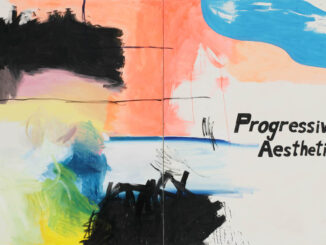
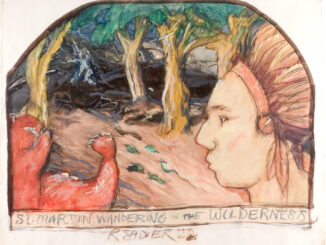
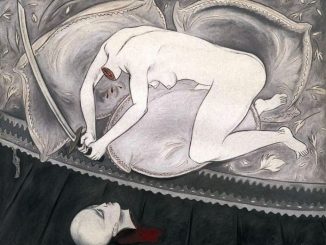
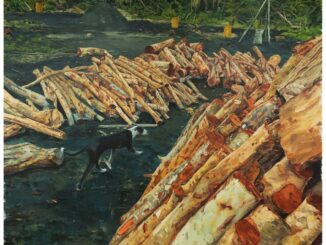

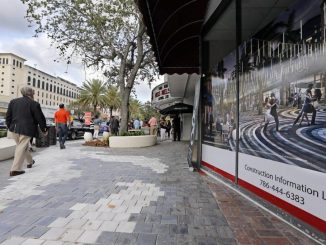
Be the first to comment